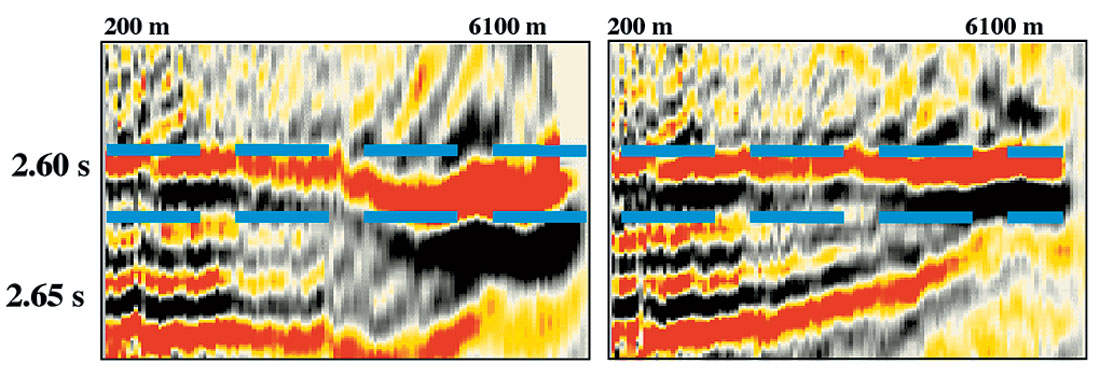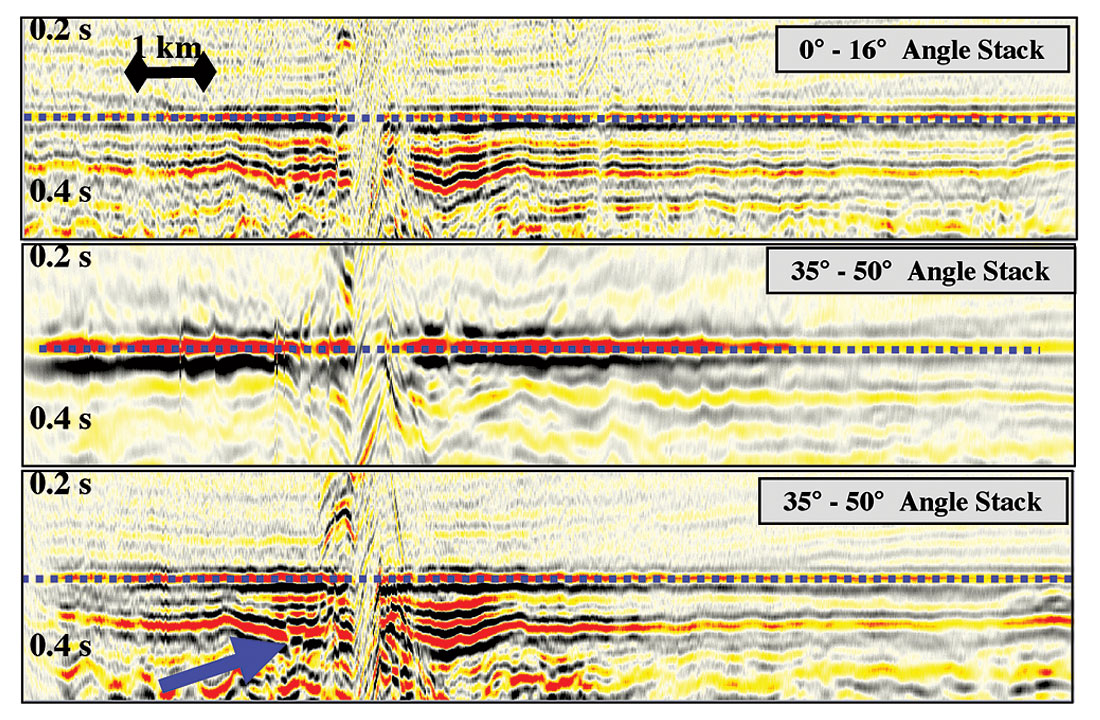This issue of the RECORDER features an open ended question on AVO, and the experts answering this question are well known names, John Castagna (University of Houston) and Fred Hilterman (University of Houston). The order of the responses given below is the order in which they were received.
Question
Is there anything left to be done in AVO?
Answer 1
From initial concept and commercial application of AVO the most significant enabling technological breakthroughs have been (1) increased understanding of how to qualitatively interpret and use AVO information, (2) quantitative inversion for rock parameters, and (3) pre-stack noise suppression and imaging. Looking forward, it is reasonable to predict that incremental improvements in each of these areas will continue, particularly for non-bright and carbonate AVO analysis. Long-offsets will be better utilized and used to better constrain velocity and density contrasts. The effects of anisotropy and inhomogeneity will be increasingly understood and incorporated into AVO processing and interpretation methods. Single and multi-dimensional wavelet transforms will be used for a variety of purposes including pre-stack spectral decomposition, localized noise suppression, and seismic inversion. Improved amplitude and phase calibration in the absence of well control is a critical path for accurate quantitative inversion that can and will be addressed. Increasingly, AVO results will be interpreted stochastically, taking into account uncertainties in data and parameters. Data volumes will increase dramatically as more channels are provided from the field and more attributes are derived from that data, requiring improvements in data handling and multidimensional visualization. Finally, as a result of increased experience and better technology the incorporation of AVO analysis into risk analysis for hydrocarbon detection, identification, and saturation estimation will become more analytical and less ad hoc as quantitative tools become routinely available.
John P. Castagna
University of Houston
Answer 2
Two years ago, I addressed this question during a research forum. Being a bit insecure of my colleagues’ reactions, I hedged my opinions by quoting other experts in the same area… just as CSEG does with the new RECORDER column “Expert Answers”.
In 1983, The Leading Edge published a DELPHI Survey that predicted technological advancements in data acquisition, processing and interpretation for the year 2000. Below are several DELPHI predictions that might indicate the acceptance factor that you place on anybody’s pre dictions. Remember these questions were formulated and answered before AVO was “born”. Here they are:
| Technological Advancements | Experts Agreeing | Year to Occur |
|---|---|---|
| 1. Seismic will determine lithology | 100% | 1992 |
| 2. Seismic will determine pore fluids and partial saturation. | 100% | 1995 |
| 3. Seismic will determine porosity and permeability. | 85% | 1992 |
This selection of DELPHI results is a bit unfair because many of their forecasts were right on, but the three predictions related to amplitude interpretation are not all widely accepted today. Have the researchers failed us? Have we failed in the science of forecasting? Or are the forecasted results happening now? This last question is not insignificant, especially when related to AVO! Koefoed, the “inventor” of AVO, commented on this in 1955. In his classic article, Koefoed stated that seismic provides “… lithologic nature of rock strata from … reflection coefficient curves.” This is AVO, as we know it fifty years later. But in the same article Koefoed mentioned that the oil industry would not apply AVO principles in the near future. Indeed, it was 27 years later (1982) when Ostrander verified AVO as a lithologic prediction tool. But many companies were working on AVO between 1955 and 1982 and they had significant results.
I’ve taken this tortuous path to illustrate two concepts. First, experts (researchers) are not necessarily the best forecasters of interpretation techniques that rely on the recognition of seismic anomalies. Second, the time delay from interpretation research to practical implementation is often large because the data necessary for implementation are not available to the interpreter. I will comment on the availability of data. Of course, there is the prevalent complaint of no monetary support from the oil companies to conduct field experiments necessary for providing new interpretation techniques.
Going back to the question, “Is there anything left to be done in AVO?”, we all agree that in the last five years numerous AVO advances have been reported in literature, technical conferences and commercial presentations. And definitely, we expect this to continue. But where will the big AVO advancement come from? Will time-lapse, OBC, 4C, 9C, permanent sensors and/or azimuthal acquisitions provide the data for new amplitude interpretation techniques? Will the combination of multiple wave fields (such as PP and PS) or vector acquisition lead to the next amplitude interpretation breakthrough? Or, will the current emphasis on amplitude-loss mechanisms associated with hydrocarbons explode into the next amplitude interpretation tool?
All these options are good candidates for advancing the AVO principle of calibrating seismic to rock properties. But, in today’s current business climate, my prediction goes to any technique that will not add appreciable cost to acquisition and processing and still be delivered with little increase in turnaround time. An area of research that I believe fits these requirements and one that has been investigated in recent years is AVO for very large offsets … offsets that are two, three or greater times the depth of interest. With the channel capacity of today’s acquisition crews, large-offset data are already recorded; it’s just that the very far offsets are normally bypassed during processing.
A major problem with far-offset data is the distortion and stretch of the seismic wavelet. Numerous papers have discussed innovative techniques for reducing wavelet stretch during NMO corrections. However, it is also important that far-offset data are migrated without wavelet distortion. This is easy to accomplish with a slight modification to today’s Kirchhoff common-offset migration algorithms.
A field example of non-stretch migration and NMO is shown in Figures 1 and 2.

Better structural delineation and better amplitude control for reservoir characterization are obtained when wavelet stretch is avoided in migration and NMO. This does not answer the question, “Is there anything left to be done in AVO?” Instead, the nons t retch processing procedure allows for more robust AVO applications in a target-oriented fashion. I believe new advances in AVO will come from the interpreters when they begin to map data at offsets that were not available to them before.

My personal interest in non-stretch AVO is to have realistic amplitude and frequency preservation to quantify recent loss-mechanism (attenuation) theories that associate fluid mobility (permeability/viscosity) to frequency and incident angle. In addition, the results from this processing technique will be applicable for quantifying reservoir compartments using propagation effects caused by wave front distortions through reservoirs with slight velocity heterogeneity.
In short, there is still plenty to do in AVO and interpreters will play an important role characterizing anomalies never seen before.
Fred Hilterman
University of Houston











Share This Column